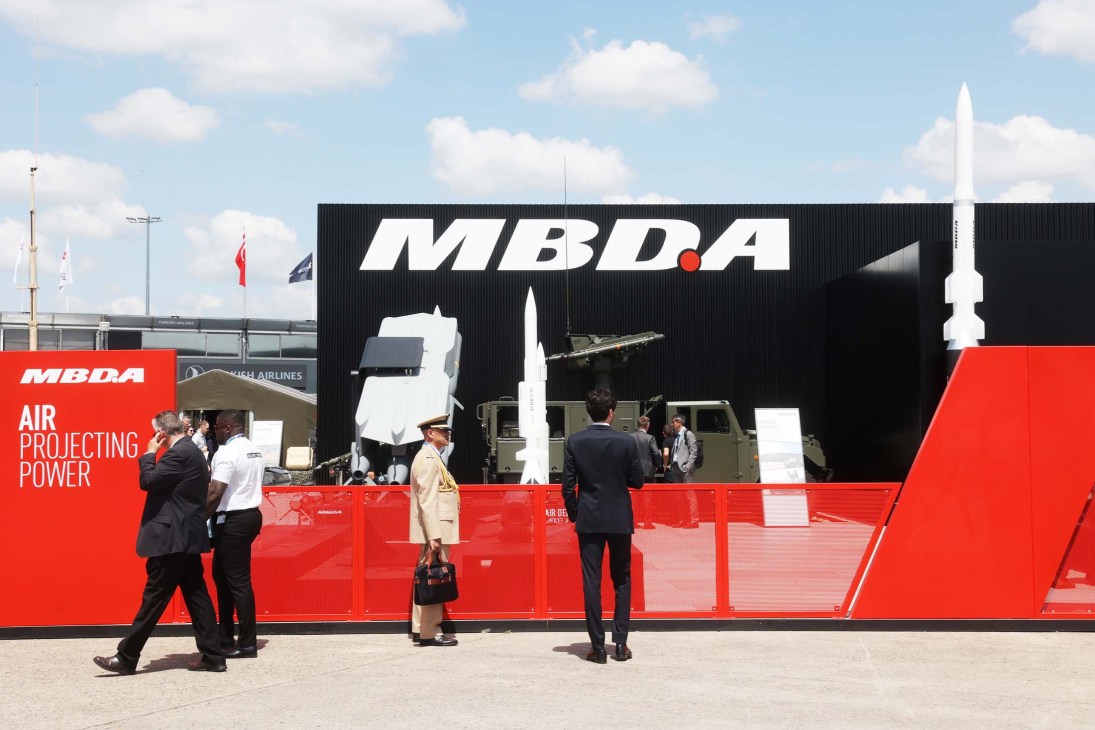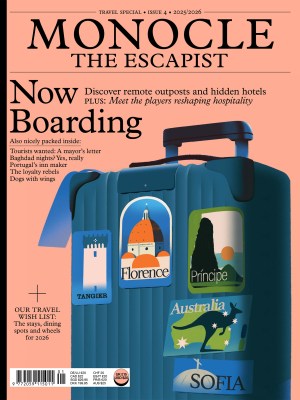What the Paris Air Show tells us about the future of flight
From military drones to space rockets and sustainable fuel, the aviation industry is racing toward a new era. Here’s what is and is not ready for takeoff.
The deadly crash of an Air India Boeing 787 Dreamliner in Ahmedabad on 12 June – just days before this year’s Paris Air Show – ensures that the mood at Le Bourget on the opening morning is at odds with the sunny weather. Since Boeing’s CEO, Kelly Ortberg, cancelled his plans to attend and the corporation ruled out making any business announcements, attendees know that the event won’t be dominated – as it usually is – by the competition between the US manufacturer and its main European rival, Airbus. With that arm-wrestle momentarily paused, what are the great and the good at Le Bourget going to talk about this year?
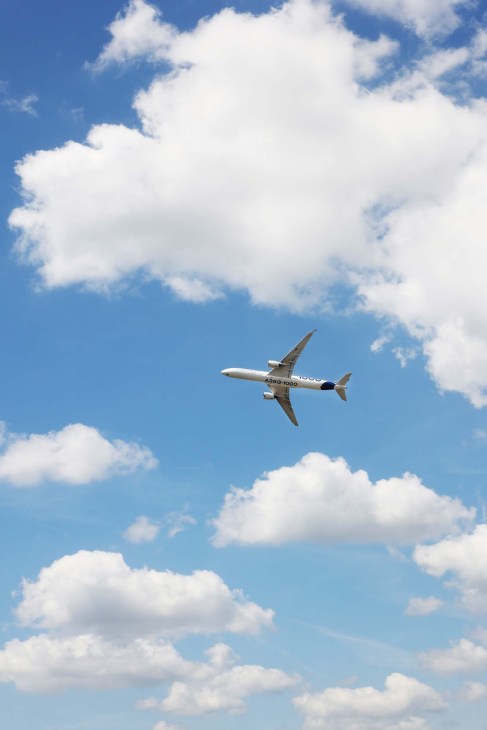
As always with big commercial fairs, it helps to follow the money. With major geopolitical turbulence buffeting Europe, a huge rearmament effort is releasing a lot of money into the aviation sector. Indeed, pride of place on the tarmac has been reserved for two military planes – an Airbus A400M Atlas and Dassault Aviation’s iconic Rafale fighter jet – and some parts of the fair feel like an air-force base. Officers sporting aviators move among sprawling stands devoted to drones, missiles and radar systems, which wouldn’t have had such prime real estate a few years ago. Here’s what else is being discussed above the din of roaring jets.
Unmanned aerial vehicles
The threat and opportunity of uavs and drones hover over most conversations at the air show. “A €100 toy can now destroy a €100m aircraft,” as a European air-force officer tells Monocle. That cost-benefit analysis is reshaping procurement strategy. Drone swarms have already been tested as defensive shields for fighter jets – and are, if conversations here are to be believed, likely to become a standard operating procedure across the world’s air forces. Even as militaries scramble to adapt to the game-changing warfare being pioneered on the battlefields and in the skies above Ukraine, UAV technology is changing. “Ten years ago, we couldn’t detect anything slower than 50 metres per second,” says Eric Huber, Thales’s vice-president for surface radar. “Now we can see targets at 10 metres per second.” His company’s Ground Fire 300 radar tracks up to 1,000 simultaneous targets – an indication of how big drone swarms are expected to become.
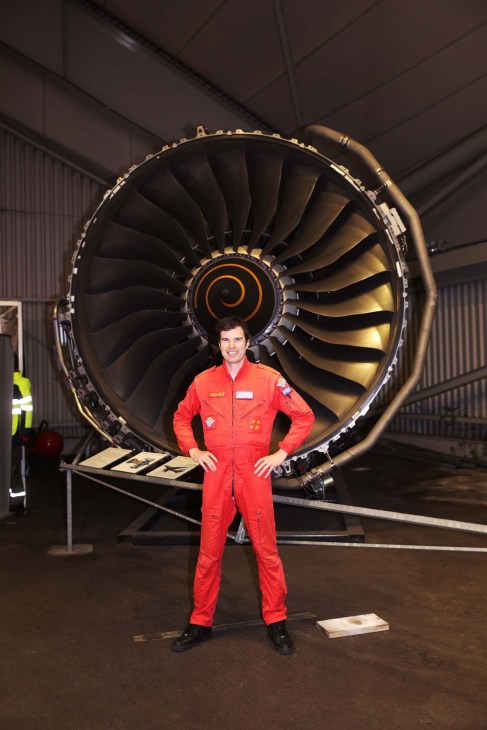
During a Strategic Aerospace Seminar at the Hôtel de Bourrienne,Taras Wankewycz, the CEO of hydrogen start-up H3 Dynamics, argues that hydrogen-powered UAVs will redefine our understanding of stealth and endurance. “Electric UAVs are quiet and low signature but battery limited,” he says. “Hydrogen expands range dramatically.” Wankewycz tells Monocle that mobile units enabling liquid-hydrogen UAV supply will be a battlefield reality in the near future. Big players such as Airbus and Lockheed Martin are now pushing into unmanned systems, either through in-house development or strategic acquisitions. Yet many significant advances seem to be coming from software firms such as Helsing, which are marrying rapid deployment hardware with AI to speed up decision-making and co-ordination.
What was once a novelty is now a necessity. The organisers of this year’s show invited more than 100 start-ups to present what they are working on in a dedicated space. Many, such as France’s Aerix, are developing “dual-use” technologies for defence and civilian needs – from medicine deliveries and pipeline inspections to flying taxis. In the civilian space, there are still a lot of questions about regulation: how can drones and traditional aircraft share airspace safely? To what extent will authorities allow the buzz of delivery drones overhead to pervade urban life? One thing is clear: unmanned aviation, military and civil, isn’t on its way – it has already landed.
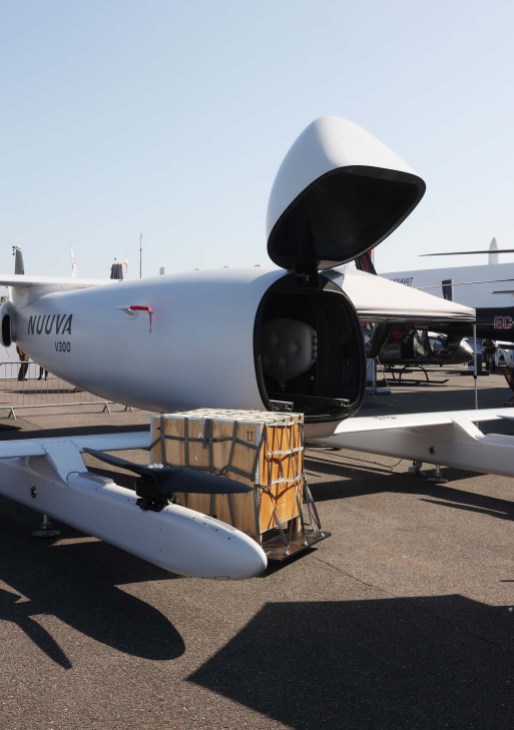
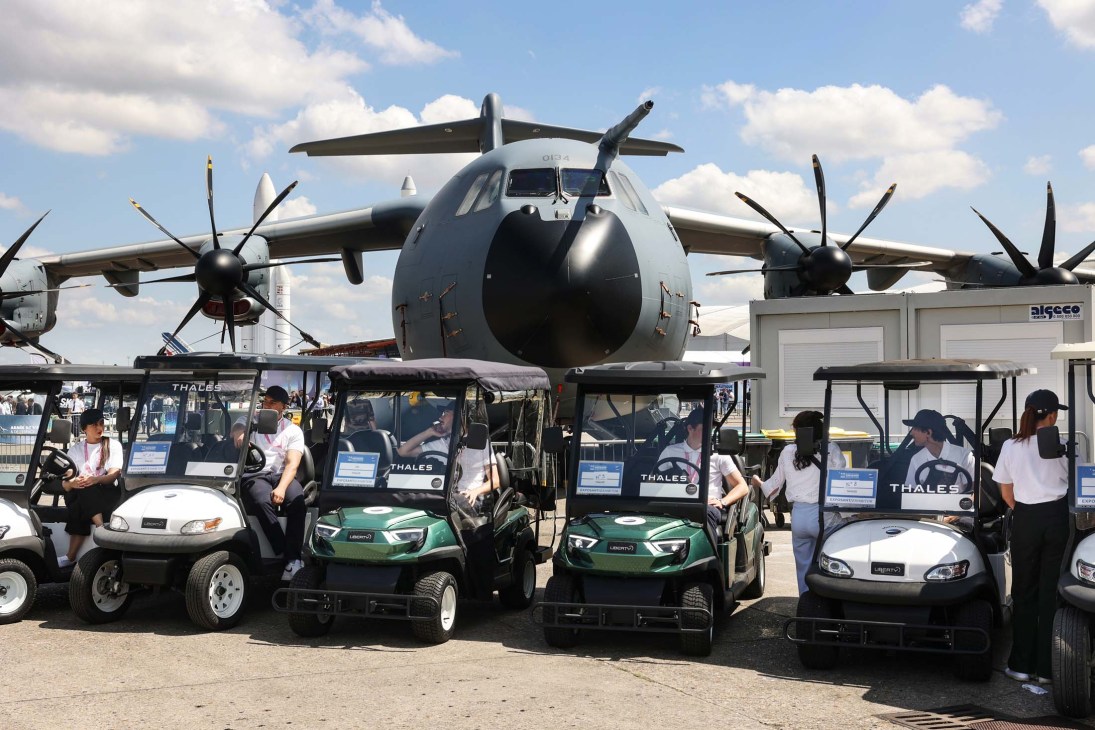
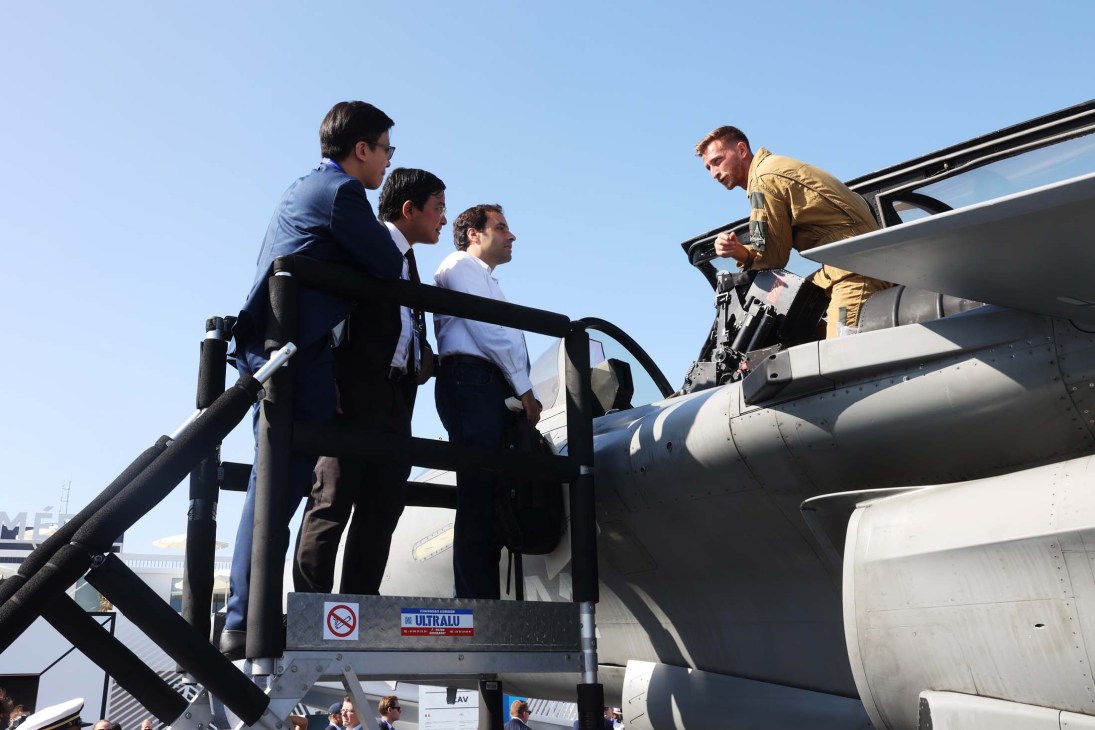
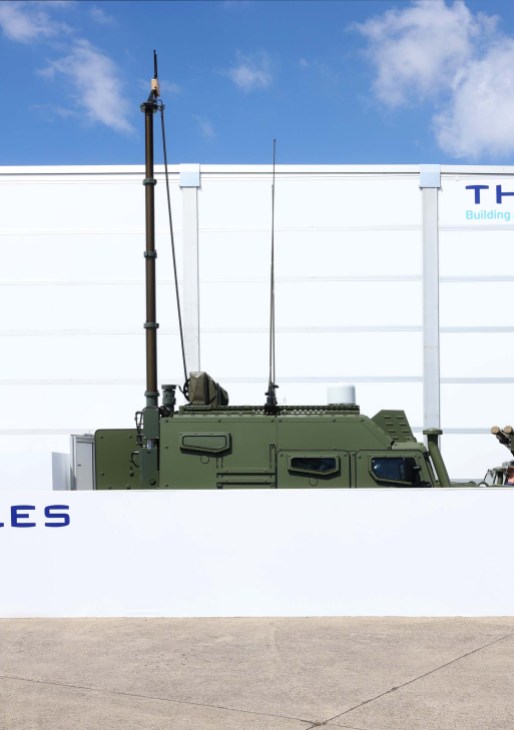
Manufacturing
With Boeing less present, Airbus is dominating the backrooms: the European giant has taken off with almost $20bn (€17bn) in deals, including prominent contracts with Saudi Arabian players such as Riyadh Air. But there are signs that the traditional duopoly is broadening as the Airbus-Boeing duel gives way to a more fragmented and dynamic landscape.
Brazil’s Embraer, already a leader in the regional jet space, is making headlines with its urban air-mobility arm, Eve, which has inked a $250m (€217m) deal for 50 Evtols (electric vertical take-off and landing aircrafts) with São Paulo-based Revo. China’s Comac C919 narrow-body jet – which has been flying over the People’s Republic since 2023 but is absent from Paris due to its lack of European certification – is courting Southeast Asian operators and quietly positioning itself as a viable third force. When it is certified in the next few years by European regulators, it could become a major player in the West, given the aircraft shortage that continues to blight the civilian flight industry. According to McKinsey, just 7,000 aircraft were delivered globally from 2019 to 2024, 5,000 fewer than projected before the pandemic. As a result of supply chain snarls, labour shortages and material delays, manufacturers and their suppliers are under immense pressure to catch up. This lag benefits leasing companies (rates for the 737 Max 8, for example, have soared by nearly 60 per cent since 2021) but hampers airline expansion.
Complaints from carriers, such as Air France, that European regulations are putting them at a structural disadvantage against state-backed competitors – combined with the fallout from transatlantic tariffs and geopolitical tensions – mean that it’s likely that governments will increasingly offer to prop up their national flag carriers when it comes to manufacturing and procurement. France has floated incentives to reshore aerospace production, while India and the UAE are tying purchases to local assembly deals, further complicating the equation for manufacturers that are duty-bound to ensure consistent production standards.
Monocle swings by the invitation-only Strategic Aerospace Seminar on the sidelines of the show, organised by Belgian think tank Premier Cercle. Here, one industry analyst tells us that commercial traffic will continue to grow by up to 5 per cent a year for the foreseeable future. With Nato countries ramping up defence spending, orders for commercial and military aircraft will rise – so building faster and delivering more reliably presents a big opportunity for anyone who can take advantage of this. But, as ever, a single weak link in the supply chain or safety concern can hold up the delivery of an entire aircraft. Nurturing the vast ecosystem of suppliers on which manufacturers rely is crucial, as going it alone is not an option – even for the giants.
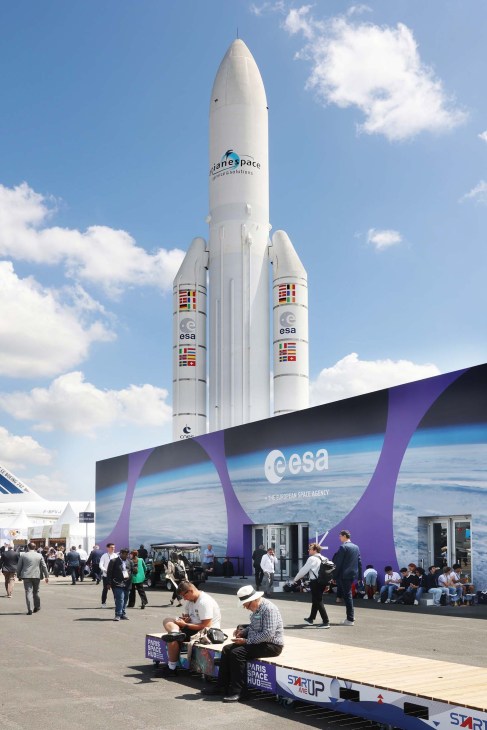
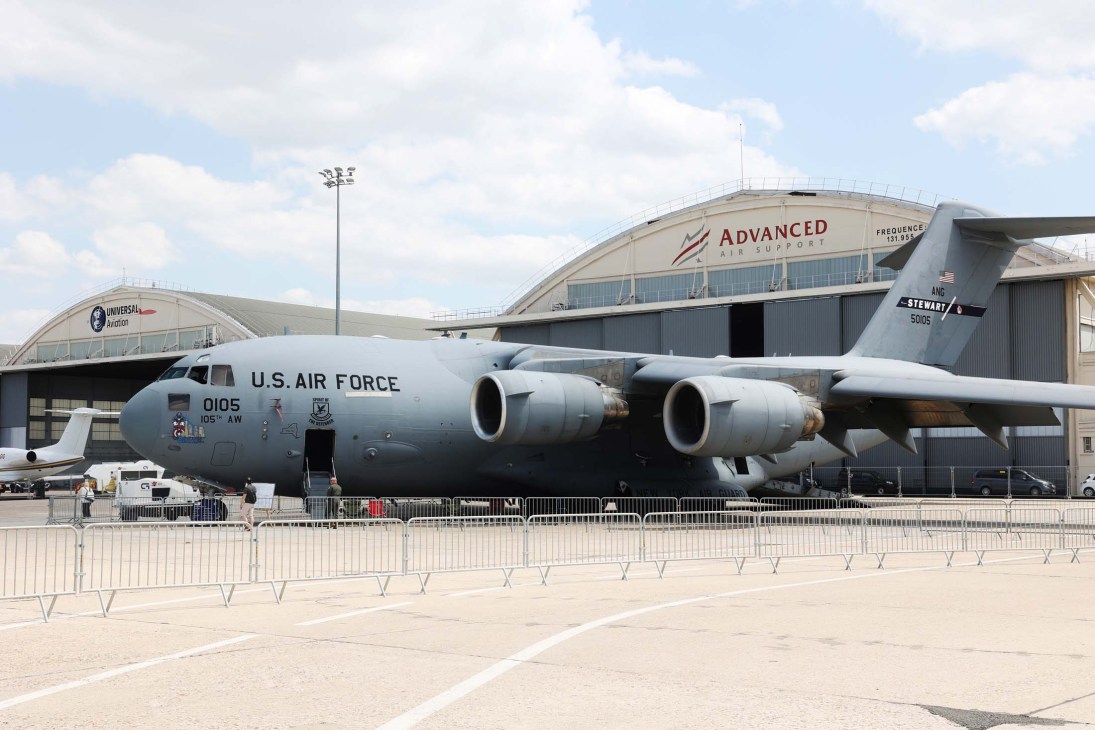
Civil aviation
Airbus’s sale of 25 A350-1000s to Riyadh Air, a Saudi airline that hasn’t even flown yet, shows both industry-wide confidence in air travel and continued state support for the sector in the Gulf region. At this year’s event, Qatar Airways has been named the Skytrax World’s Best Airline for the ninth time. Emirates has come fourth this year; it has won the award four times since the inception of the prize in 2001. That’s a lot of visibility and prestige for two countries with a combined population of just 14 million. Saudi Arabia is looking to emulate their success at establishing brands that are admired for the quality of their service.
Meanwhile, low-cost carriers continue to gain ground across the globe (a notable exception is North America), creating a market that’s polarised between premium and budget experiences. “I wouldn’t be surprised if aviation ends up like fashion, dominated by low-cost carriers on one end and luxury brands on the other,” one industry insider tells Monocle at the Aéroports de Paris chalet.
Besides the shifting business models reshaping the carrier landscape, the future of civil aviation largely depends on logistical advances. Airspace is overcrowded, ground staff are overwhelmed and airport logistics are strained, as evidenced by the travel chaos in Europe this summer. Meanwhile, newer, lighter aircraft, such as the Airbus A321 XLR, are capable of bypassing traditional hubs, so airports will need to expand or adapt to increasingly crowded operating conditions. On top of congestion and less predictable weather due to climate change, conflict in the Middle East and Ukraine is restricting the available airspace. It all adds up, leading to lengthy delays, frustrating customers and costing airlines almost €90 per minute.


Alternative fuels
In a year dominated by big guns, the lower profile, less headline-grabbing booths dedicated to clean technology can be easy to overlook. Perhaps that belies a lack of momentum in sustainable aviation fuels (SAFs), even though EU mandates, which came into effect in January, impose minimum quotas for the use of sustainable fuels. The atmosphere is sluggish. With that deadline looming and lofty 2050 objectives of carbon neutrality still in place, both availability and the cost of SAFs remain a challenge. SAFs made by recycling food or agricultural and forestry waste can be used as a like-for-like replacement for kerosene (the primary ingredient in jet fuel) while producing up to 80 per cent less carbon emissions. That transition, if it happens, will make a significant dent in the aviation industry’s 2.5 per cent share of global emissions.
Production of SAFs doubled between 2023 and 2024 and is expected to double again by the end of 2025 but the International Air Transport Association has dubbed global progress in replacing fossil fuels as “disappointingly slow”. At fault is the continued abundance of fossil-fuel subsidies, as well as worldwide backtracking on sustainability goals, led by a shift in US policy.
With airline profit margins already razor-thin, few want to spend extra cash on greener fuel without government support. Partnerships between the public and private sector will be crucial in the SAF transition. Given the current economic and geopolitical headwinds, this doesn’t seem likely to be a top priority in a world of conflicts and tariffs.
Kevin Noertker, co-founder of Ampaire, isn’t making promises about net-zero moonshots. He’s starting small, with a combustion engine conversion that turns engines for Cessna Grand Caravans into efficient hybrid propulsion systems that cut fuel use by 50 per cent. “Like the Prius did for cars, they eliminate range anxiety, work with current infrastructure and are available now,” he tells Monocle. The solution that he is developing could eventually encompass passenger-jet engines but clearing regulatory hurdles and convincing the risk-averse to gamble on new technology will take time and effort. As long as SAFs still cost between three to ten times more than conventional fuel, it’ll remain a matter of baby steps where giant leaps are needed.
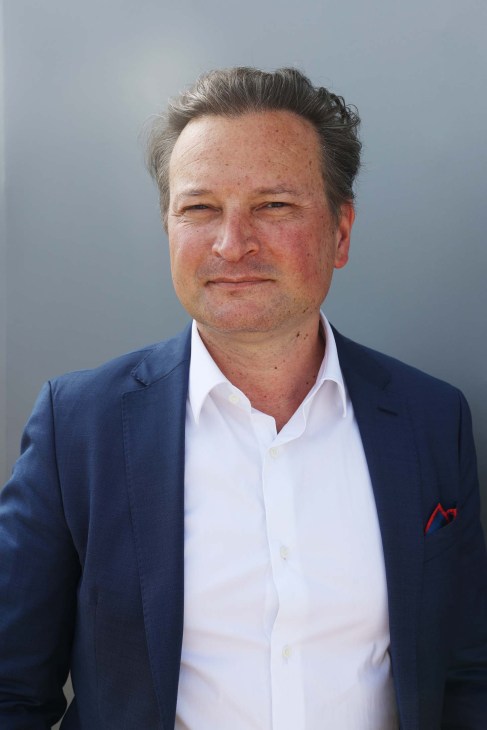
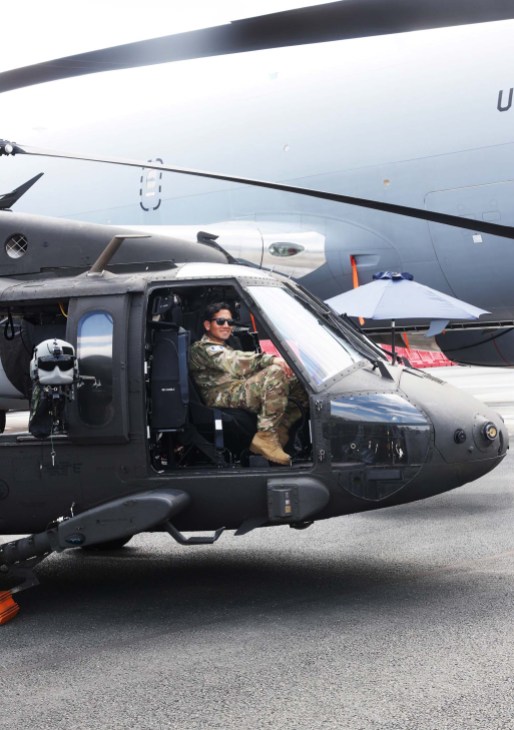
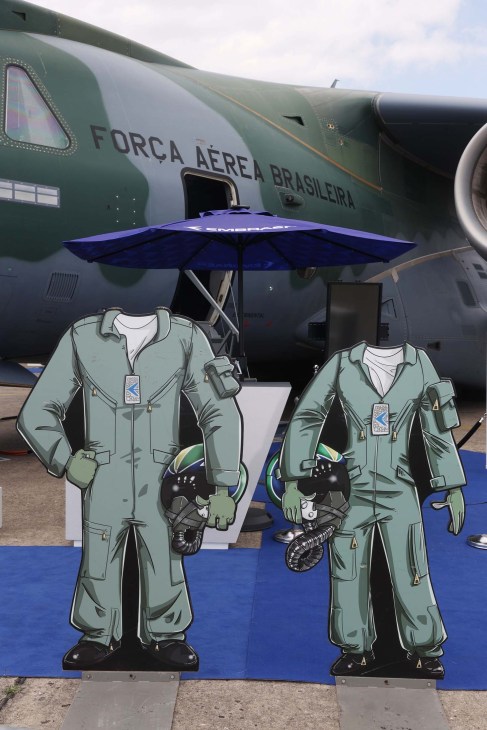
Space
While an F-35 roars overhead and commercial- aircraft deals are being struck below, there’s a quieter kind of aerospace ambition at the air show’s space pavilion. Monocle spots France’s prime minister, François Bayrou, making a hushed visit to the ArianeGroupe stand. Government efforts to reach and navigate space are nothing new but the interest in it as a place to do business is. “Satellites used to weigh 10 tonnes and cost $500m [€438m] to launch into orbit,” says Stanislas Maximin, a co-founder of the Reims-based rocket company Latitude. “New small satellites now cost less than €1m, so we’re seeing massive growth in launches.”
According to a recent report by Goldman Sachs, the satellite market could grow from $15bn (€13bn) today to $460bn (€400bn) in the next decade, with 70,000 low-Earth-orbit launches expected in the next five years. Latitude builds rockets for small satellite launches that Maximin promises are the cheapest on the market. “We just need a concrete slab and electricity,” he says. “Everything else – launchpad, rocket, even facilities – we can bring ourselves.”The main target market? Not governments or their armed forces but commercial clients. “It’s all about data,” says Maximin. “How do we understand our planet better? How do we build services that enable us to track containers or detect tanks?”
With generous public funding, home grown engineers and access to a world-class spaceport in French Guyana, France’s space start-ups are well placed. Latitude’s goal is to work up to 50 launches a year but early failures are expected, including at its first rocket launch, scheduled for the end of 2026. “I just hope that we don’t blow up the $4m [€3.5m] launchpad,” says Maximin with a laugh. As satellites become more accessible, space will become a marketplace – bringing with it unglamorous cargo, including regulation, waste-management procedures and maintenance headaches. Such things have yet to bring entrepreneurs back down to Earth and the optimism here is stratospheric.
